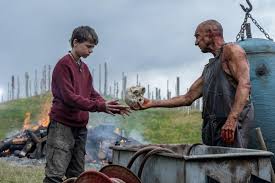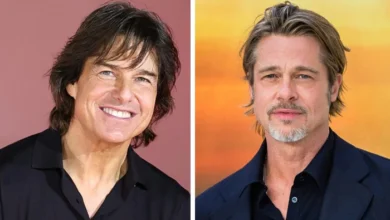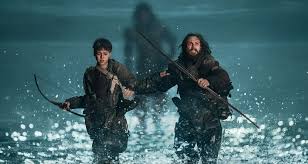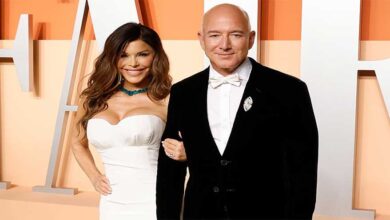28 Years Later, the third installment in the groundbreaking zombie franchise, delivers a potent mix of visceral horror, family drama, and tantalizing setups for future films. Directed by Danny Boyle, who helmed the 2002 classic 28 Days Later, this film reinvigorates the series with its signature fast-moving, rage-fueled zombies while weaving a heartfelt story of a father and son navigating a ravaged world.
A World of Rage and Resilience
Set 28 years after the rage virus outbreak, the story follows Jamie (Aaron Taylor-Johnson), a father living on a fortified island off Scotland’s coast, a medieval-like stronghold safe from the cannibalistic infected. Jamie, reminiscent of The Last of Us’ Joel, is a fierce protector of his 12-year-old son, Spike (Alfie Williams), teaching him survival skills like wielding a bow-and-arrow against the relentless zombies. Spike, curious about the world beyond their walls, seeks a doctor to save his ailing mother, Isla (Jodie Comer), sparking a perilous road trip across the zombie-infested mainland.
The film’s zombies, born from Alex Garland’s vision in 28 Days Later, remain a terrifying departure from George A. Romero’s slow shufflers. These infected sprint with Usain Bolt-like speed and overpower with superhuman strength, a concept that may draw parallels to The Crazies (1973) or The Last of Us’ fungal horrors. Boyle’s frenetic direction—marked by rapid edits and dynamic camera work—amplifies the danger, though it also tastefully obscures the nudity of the infected, a bold choice that underscores their raw, primal state.
Family Drama Meets Horror Metaphors
Beyond the gore, 28 Years Later excels as a family drama. Jamie’s lies to protect Spike breed resentment, mirroring the complex parent-child dynamics of The Last of Us. The film subtly explores illness as a metaphor—perhaps for cancer—offering a rare introspective lens on the rage virus’ personal toll, though it stops short of fully dissecting its scientific or psychological impact.
Supporting characters enrich the narrative. Ralph Fiennes shines as Ian Kelson, a serene doctor surviving in the Scottish Highlands with a zen-like calm, his intelligence and resilience a quiet counterpoint to the chaos. Chi Lewis-Parry’s towering “Samson,” an “alpha” zombie with hints of intelligence, introduces intriguing concepts like infected pregnancy, though these threads feel like teasers for the next installment, confirmed for release next year.
A Franchise Eyeing the Future
Like the Marvel Cinematic Universe, 28 Years Later leans heavily into world-building, opening with a scene introducing a character pivotal to the sequel. Multiple moments hint at future conflicts, making this film feel like a bridge to what’s next. While this tactic hooks viewers, it occasionally overshadows the present story, leaving some questions—like the origins of Samson’s child—unanswered.
Why Watch 28 Years Later?
Fans of the franchise will revel in its return to form, blending gruesome action with emotional depth. Newcomers may find the zombie genre familiar but will appreciate the film’s unique spin on infected behavior and its compelling performances. Rated R for intense violence, grisly visuals, nudity, language, and brief sexuality, it runs for 1 hour and 55 minutes and is now in theaters.
28 Years Later is a thrilling, if transitional, chapter that honors its roots while paving the way for an ambitious future. Whether you’re a zombie aficionado or a fan of poignant survival tales, this film delivers a bloody, heartfelt ride.







